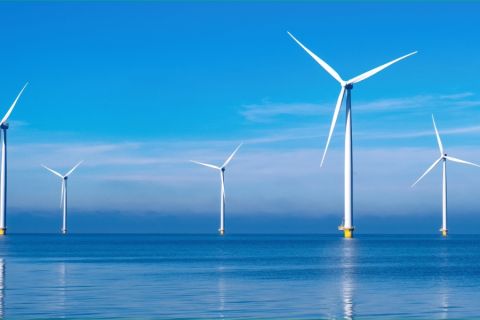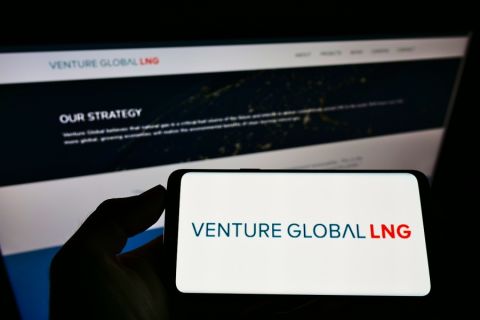When Victor Burk told energy-industry journalists in Houston that the world's largest publicly traded oil and gas companies spent substantially less in 2000 on exploration and development (E&D), the surprise was nearly palpable. This didn't end up in any headlines-at least in any major publication-however, since it isn't what Burk meant. Instead, the Andersen global managing partner for its energy and utilities practice said these companies spent less on E&D as a percentage of their pretax operating cash flow. And, producers had much of that. Burk was going over Andersen's "Global E&P Trends 2001" report, the 22nd annual, at a press conference last month. The firm studied the 155 companies' 2000 annual reports, put all this E&D, earnings and other information through its mill and turned out a multitude of numbers that make facts of what the industry was up to last year. Fact No. 1, they spent lots of money on E&D, no matter all the news of huge share-buyback, debt-payoff and other non-reserve-booking uses of their spare cash. According to the Andersen report, the companies spent $81 billion in 2000 on E&D and $43 billion on proved-reserve acquisitions-the stuff that is to keep them in the production business many years from now. Each figure is higher than in each of the prior four years, including 1996-97 when the industry experienced its last "boom." In 1997, $73 billion was spent on E&D and $17 billion on acquiring proved reserves. In 1996, it was $54 billion and $12 billion, respectively. Combined, the 2000 spending was nearly twice that of 1996. 1996-97 wasn't a boom at all, compared with 2000, it is clear. Pretax operating cash flow was $151 billion last year, for the 155 companies; in 1996, it was $63 billion; and in 1997, $62 billion, according to Andersen's findings. 1998 certainly was a bust, though; in that year, the E&P firms recorded only $13 billion in cash flow. Of their cash flow in 2000, they had $28 billion left for taxes, after putting $81 billion on E&D and $42 billion on reserve acquisitions. In 1998, they brought in $13 billion, and spent $77 billion on E&D and $12 billion on acquisitions; in 1997, $62.2 billion and spent $72.8 billion on E&D and $17 billion on acquisitions. These figures are all for worldwide spending. The U.S. is where much of the additional E&D spending was seen: $28 billion, compared with $16 billion in 1999. The figure topped the $26 billion in 1998, which had been a four-year best. As for acquisitions, these also totaled $28 billion in 2000, up from $5- to $8 billion in 1996-99. In Canada, the E&D investment grew too, to $8 billion, which had been preceded by $5 billion in 1999 and 1998; $6 billion in 1997; and $4 billion in 1996. Acquisitions totaled $6 billion (a figure bested earlier this year), up from $2- to $4 billion in 1996-99. In Latin America, E&D spending declined slightly to $5.3 billion, from $5.5 billion in 1999. Since 1996, it had totaled less than $4.5 billion. Acquisitions totaled $1 billion last year, down from $9 billion in 1999 and $1 billion or less in 1996-98. In Europe, E&D spending was $9.9 billion in 2000, down from $10.7- to $15.4 billion since 1996. Acquisitions ran $3.9 billion, down from $4.7 billion in 1999 but still up from less than $1 billion in prior years. In Africa and the Middle East, E&D spending was $4.4 billion in 2000, down from $5.9- and $5.5 billion in 1998 and 1999, respectively, but up from less than $4 billion in 1996 and 1997. Acquisitions were unchanged, at about $100 million. In the Asia-Pacific region, E&D spending grew to $9 billion, from $8 billion in 1998 and $5.1 billion or less in prior years. Acquisition outlays were mostly unchanged, at about $200 million. Another $16 billion was spent on E&D and $4 billion on acquisitions in unspecified areas of the world, according to the Andersen report. Burk expects U.S. E&D spending to increase this year and next. "Of course, a drop in oil or gas prices for an extended time would probably change this outlook," he adds. Drilling activity is already tapering in the Gulf of Mexico, as gas prices have declined, according to a report on page 93 of this issue. For more on the Andersen report, see "Smarter Spending?" on page 77. For a tally of U.S. proved-reserve acquisitions so far this year, see the biannual M&A list that begins on page 82.
Recommended Reading
Guyana’s Stabroek Boosts Production as Chevron Watches, Waits
2024-04-25 - Chevron Corp.’s planned $53 billion acquisition of Hess Corp. could potentially close in 2025, but in the meantime, the California-based energy giant is in a “read only” mode as an Exxon Mobil-led consortium boosts Guyana production.
US Interior Department Releases Offshore Wind Lease Schedule
2024-04-24 - The U.S. Interior Department’s schedule includes up to a dozen lease sales through 2028 for offshore wind, compared to three for oil and gas lease sales through 2029.
Utah’s Ute Tribe Demands FTC Allow XCL-Altamont Deal
2024-04-24 - More than 90% of the Utah Ute tribe’s income is from energy development on its 4.5-million-acre reservation and the tribe says XCL Resources’ bid to buy Altamont Energy shouldn’t be blocked.
Mexico Presidential Hopeful Sheinbaum Emphasizes Energy Sovereignty
2024-04-24 - Claudia Sheinbaum, vying to becoming Mexico’s next president this summer, says she isn’t in favor of an absolute privatization of the energy sector but she isn’t against private investments either.
Venture Global Gets FERC Nod to Process Gas for LNG
2024-04-23 - Venture Global’s massive export terminal will change natural gas flows across the Gulf of Mexico but its Plaquemines LNG export terminal may still be years away from delivering LNG to long-term customers.





